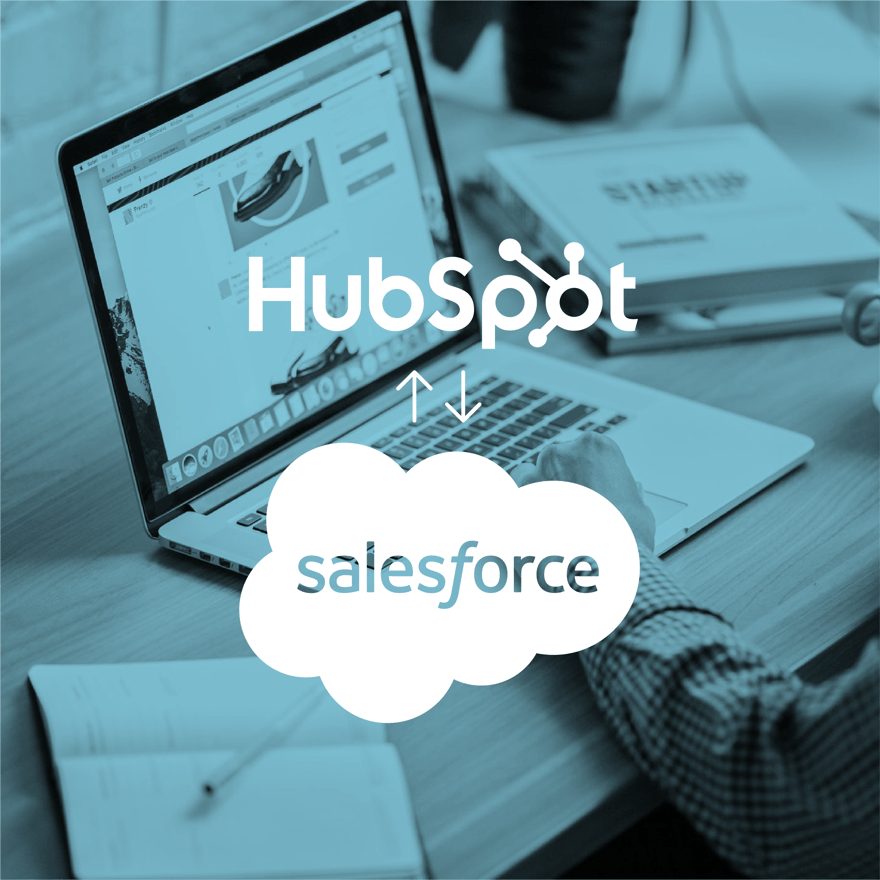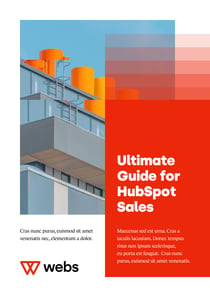Do you have a HubSpot Marketing subscription, but are you also using Salesforce as your CRM? You’re not alone. In fact, thousands of companies are using the HubSpot Marketing Hub in combination with a Salesforce CRM. In this scenario, you’ll typically see marketing campaigns running in HubSpot and sales outreach running in Salesforce. Be careful though: companies with this setup risk having massive gaps in their marketing and sales handoff since the two departments end up working on different platforms.
To remedy this, most companies using HubSpot as well as Salesforce decide to create an integration between these two platforms. In most cases, this integration allows the two types of software to seamlessly sync information, removing any obstacles between marketing and sales efforts.
While an integration might sound great, it’s important to have a solid plan and an understanding of how HubSpot and Salesforce work together. A poorly set up integration may end up leading to more problems than having two disconnected platforms. To help avoid these common pitfalls, this blog will cover some key tips you’ll need to know before setting up your HubSpot and Salesforce integration.
Tip #1 - Get your object vocabulary up to date
People familiar with HubSpot will know that there are three main objects:
- Contacts
- Companies
- Deals
However, people familiar with Salesforce have different main objects in mind:
- Leads/Contacts
- Accounts
- Opportunities
Because of these differences, it’s important to understand how objects match before proceeding with an integration.
As you can see, each HubSpot object matches with a Salesforce object with a different name. For example, a “company” object in HubSpot matches with an “account” object in Salesforce. Understanding how these two types of software call their objects is essential to setting up a successful integration.
Tip #2 - Choose the correct integration type
Before beginning your HubSpot/Salesforce integration, it’s important to understand what type of integration you’ll need. Below you’ll find the two types of integrations you can choose from:
HubSpot’s Native Integration
By far the most popular HubSpot/Salesforce integration is the native integration offered by HubSpot. In most cases, the native integration is preferred because it’s easy to set up, it is supported by HubSpot support, and it’s free (as long as you have a HubSpot Professional Marketing Hub subscription and a paid Salesforce account). The native integration also performs most of the requirements needed in a standard HubSpot/Salesforce setup.
Essentially, the native integration helps sync the main HubSpot objects with the main Salesforce objects. This means that:
- HubSpot contacts will sync with Salesforce leads/contacts
- HubSpot companies will sync with Salesforce accounts
- HubSpot deals will sync with Salesforce opportunities
That said, the native integration cannot sync any additional objects besides the ones mentioned above. For example, if you have created any “custom objects” in Salesforce, you will not be able to sync them using this integration. This is problematic for many businesses using a more customised Salesforce setup. In this case, it might make more sense to explore a “custom integration”.
Custom integrations
Custom integrations are integrations created by individuals or companies that aren’t part of HubSpot or Salesforce (such as Webs). Because these integrations haven’t been created by HubSpot or Salesforce, they’re not supported by those companies either. Instead, the custom integrations are supported by the company or individual who created them.
These custom integrations almost always come at a cost and are somewhat more difficult to set up due to their customised nature. However, as is evident from the name, these custom integrations allow for a great deal of customisation and flexibility. Most custom integrations, for example, will easily be able to sync custom objects created within Salesforce.
Overall, it is recommended that you use the HubSpot native integration if possible. However, if the native integration doesn’t offer the flexibility you require, it might be better to explore the custom integration approach.
Tip #3 - Architect your integration before setting it up
The HubSpot academy offers a detailed breakdown on the steps needed to set up the native integration. However, HubSpot does not provide much guidance on how to plan and architect your integration to achieve your desired results. Because of this, most issues we see with the HubSpot/Salesforce integration are found in the initial planning, not in the integration setup itself. To avoid this pitfall, you must first take some time to map out your integration architecture.
The first step in architecting your integration is answering the key questions below:
- Which objects will sync between HubSpot and Salesforce?
Do you want to sync contacts, companies, and deals? Or do you just want to sync contacts? - How should objects sync between HubSpot and Salesforce?
How and when should you sync objects between HubSpot and Salesforce? Here are some examples to choose from:
-
- One-way sync (HubSpot -> SFDC):HubSpot will send all contacts to Salesforce, but Salesforce will never send any contacts to HubSpot
- One-way sync + Inclusion list (HubSpot -> SFDC): HubSpot will only send qualified contacts to Salesforce
- Bi-directional sync (HubSpot <-> SFDC):HubSpot and Salesforce will sync all contacts
- Bi-directional sync + selective sync (HubSpot <-> SFDC): HubSpot and Salesforce will sync only specific contacts
-
Should HubSpot send contacts to Salesforce as leads or contacts?
As described in Tip #1, HubSpot contacts can sync with Salesforce leads or contacts. This means that you can decide how HubSpot contacts will arrive in Salesforce.
Once you’ve answered these questions, you can start drawing up your integration architecture. Let’s assume you’ve given the following answers to the questions above:
- Which objects will sync between HubSpot and Salesforce?
Contacts, companies, and deals will be synced - How should objects sync between HubSpot and Salesforce?
One-way sync + Inclusion list (HubSpot → SFDC): HubSpot will only send qualified contacts to Salesforce - Should HubSpot send contacts to Salesforce as leads or contacts?
HubSpot contacts are beings synced with Salesforce as leads
Creating this simple blueprint based on those key questions will prove instrumental in setting up an integration with the correct settings. This blueprint has the added benefit of making it easier to explain the integration to your marketing, sales, and services teams.
If you follow the tips above, you’ll be better prepared to set up a HubSpot and Salesforce integration that achieves your goals and ensures a solid marketing and sales handoff.




